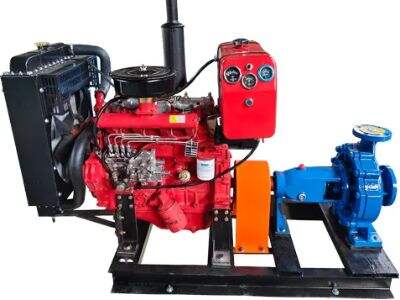One of those important machines is a centrifugal pump which aids us daily. What makes this machine special is it takes liquids from one location to other. We employ these pumps at several places, for instance, in our houses for water or in workshops for various liquids. Yet, from time to time, these pumps may have issues that prevent them from working effectively. This guide will address the 5 most common centrifugal pump problems and solutions. Keeping these challenges in mind can allow to us keep our pumps operating at their best.
Troubleshooting Tips
The first step you can take when you have a problem with your Centrifugal Pump is to troubleshoot it. Diagnostics is diagnosing what is wrong with the pump and how to fix it. Here are some useful tips to help walk you through the troubleshooting process:
Inspect the motor: The motor is another important part of the pump. If the motor isn’t functioning properly, the pump may cease to operate. Be sure to confirm that the motor is powering on and working, as well. If it isn’t, you might need to fix or replace it.
Perform clog check: Occasionally, items can get stuck in the pump. If there is a blockage, the pump may fail to move the liquid. Examine the pipes that come into the pump closely. Inspect the inlet (liquid entry point) and the outlet (liquid exit point) for blockages or debris.
Inspect the impeller: The impeller is a key component of the centrifugal pump. It assists in forcing the liquid through the pump. A broken or damaged impeller will prevent the pump from operating at all. Check the impeller to see if it is damaged or needs to be repaired or changed.
Solutions for Cavitation in Centrifugal Pumps
Cavitation is a widespread issue that centrifugal pumps experience. It occurs when the pressure within the pump drops below a threshold. The liquid, in such a situation, forms small bubbles that can be damaging to the pump over time. Those cavitation issues can be solved in a few different ways.
Increase the pressure: Raising the pressure within the pump is another successful way to solve cavitation. This prevents those little bubbles from forming in the liquid and helps improve pump performance.
: Raising the temperature reduces the chance of bubbles developing, keeping the pump happy.
Centrifugal Pumps Common Problems and Their Solutions
Let’s now look at some of the most common causes of centrifugal pump problems and how you can fix them:
Leakage: Over time when seals of the pump become worn out, leakage can occur. This does leak liquid when it happens, which is a huge problem. The solution to this problem is to install new seals in place of the old ones. This will contain the liquid inside the pump where it should be.
Low flow rate: Low flow rate also means that not enough liquid comes out of the pump. This may happen for several reasons : for example : Incoming or outgoing pipe is clogged. Solution is to clean pipes for the proper flow of liquid.
Overheating: Centrifugal pumps can also suffer from another problem called overheating. It can be caused by various factors including insufficient lubrication or damaged impeller. Always ensure that theScrew Pump is well-lubricated and replace any damaged parts to avoid overheating.
How to Maintain Centrifugal Pumps?
It is extremely important to maintain your centrifugal pump, so it continues to perform well over time. Here are some great pump maintenance tips:
Regular check-ups: Performing regular check-ups on your pump helps you find problems early. Inspecting the pump frequently will allow catching crucial problems before it leads to bigger issues.
THATS MAINTENANCE: Lubrication- It is crucial to have proper lubrication to have the pump running efficiently. When properly lubricated, the pump can avoid overheating and damaging. Be sure to adhere to the manufacturer’s instructions for lubrication.
Regular cleaning of the pump and its components can help prevent clogging and damage. Inspect and clean the pump regularly to keep it running smoothly.
Identifying and Resolving Common Issues
Finally, this is how you can detect and resolve common issues related to centrifugal pumps:
Diagnosing the problem: You can discover a problem with your centrifugal Irrigation Pump by looking for symptoms. Tell-tale signs include overheating, strange noises, or poor flow. If you experience these symptoms, it is time to investigate.
Identify the problem: The first step is to identify the problem. This is important because if you know the cause, you know where to look for a solution.
Resolve the Issue: Once you understand the issue and its cause, it’s time to take steps to resolve it. This could involve lubricating the pump, replacing any worn seals or cleaning out any clogs you detect.
Finally, centrifugal pumps are interesting machines that assist us daily in ways we would not think. But they can run into issues that get in the way of their work. Checking the motor, checking for clogs, and checking the impeller are the keys to effective troubleshooting. Cavitation is a tension issue will personal tie through Endeavour cause or temperature. Other problems such as leakage, low flow rates, and overheating can be solved with the help of proper maintenance. Whether you have a reliable well pump variety, maneuvers the well water up from underground, or a more common submersible pump or jet water pump, you can always help with troubleshooting & maintenance.



















































